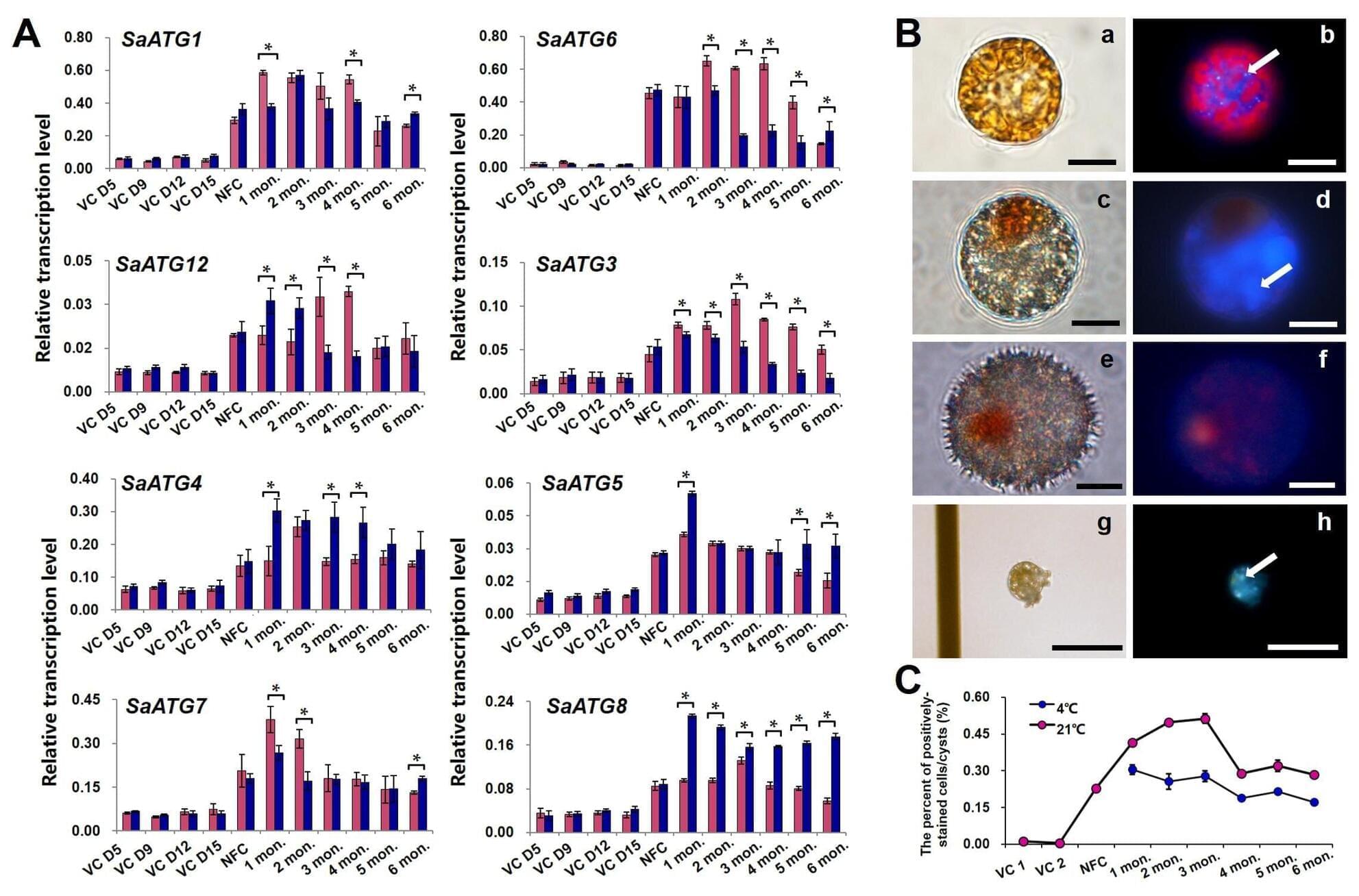Dinoflagellates play crucial roles in aquatic ecosystems, particularly as major contributors to harmful algal blooms. They can enter a dormant stage, known as the resting cyst stage, that allows them to survive for extended periods—up to 150 years—in marine sediments. This dormancy is essential for their annual population dynamics, blooming cycles, and geographic expansion.
Despite the ecological importance of resting cysts, the molecular mechanisms governing their dormancy, viability maintenance, and germination in natural sediments remain largely unexplored.
To better understand this process, researchers from the Institute of Oceanology, Chinese Academy of Sciences (IOCAS), in collaboration with scientists from the University of Connecticut, investigated these mechanisms. They utilized a dinoflagellate mRNA-specific spliced leader as a “hook,” along with single-molecule real-time sequencing and other physiological measurements.
